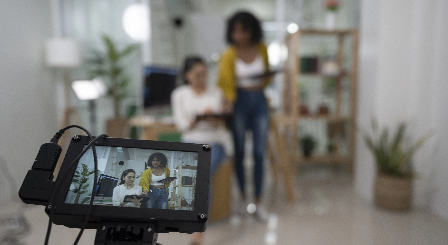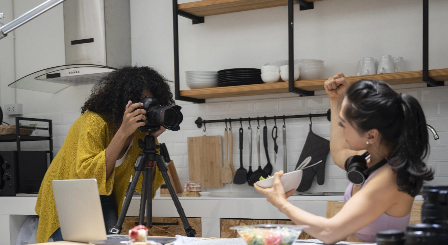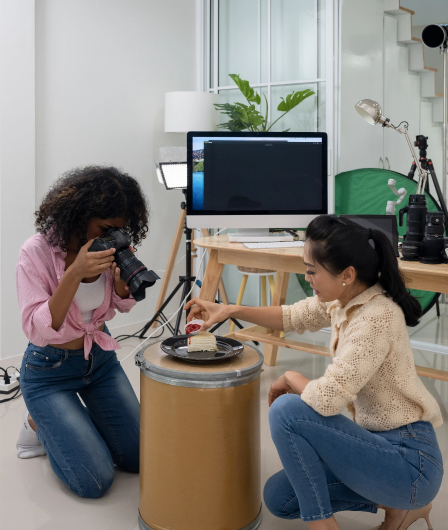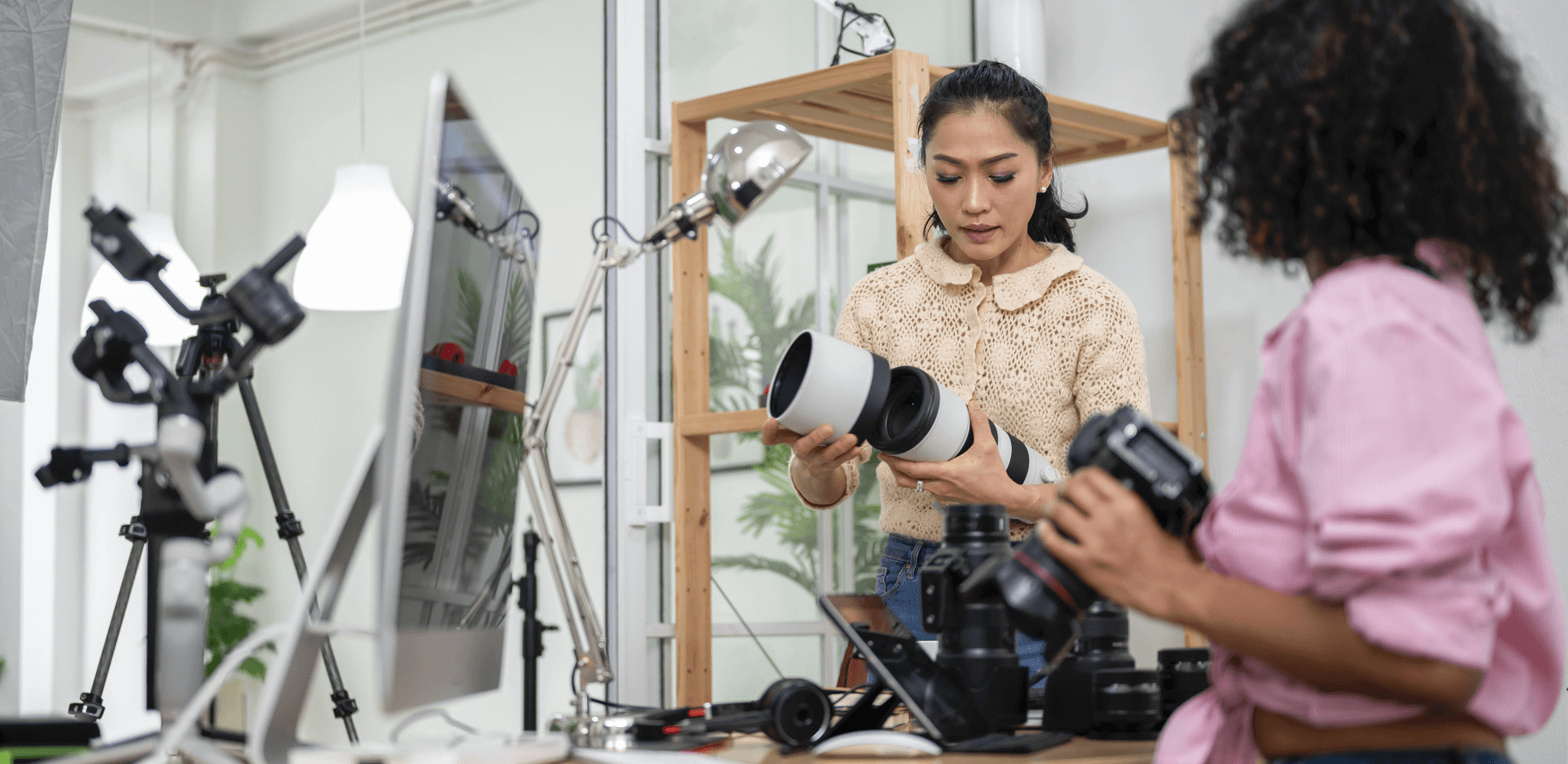Risks and Hazards for Photographers
When working as a photographer, risk can come in many shapes and styles. From rough terrain to kit thieves, there’s lots of potential hazards to be aware of.
Here, AXA examines the most common risks to photographers, and some of the best ways to avoid the most harmful hazards where possible.
What is a risk assessment?
As a business owner, it’s up to you to spot and highlight the risks present within your workplace. The first step towards identifying and controlling the possible risks to your business is to perform a risk assessment.
It might sound pretty formal, but it doesn’t always need to be. A risk assessment simply involves working out any ways in which your business operations could potentially cause harm or injury to either yourself, an employee or a member of the public, then planning the steps you’ll take to mitigate those risks. It’s an important step in protecting your team, your customers and their property, while ensuring you’re complying with your responsibilities as an employer.
If your business has under five employees, you don’t need a formal written risk assessment, although it might still be a good exercise to keep your business safe. However, if you employ five staff or more full time, then your risk assessment should be a written health and safety policy that you can use to train your staff and prevent accidents.
Hazards and risks
It may help to split your risk assessment into hazards and risks and to know the difference between the two:

Hazards
Hazards are objects or situations with the potential to cause harm. These could be items like cords and lights or processes like lifting and moving props and working at height.
Identify your hazards by examining each aspect of your business practices and asking yourself: what activities, processes, tools or substances could insure someone or harm their health? Check any accident records you might have, check manufacturer’s instructions or warning labels on any products you use and visit the Health and Safety Executive website.

Risks
Risk, on the other hand, is about assessing how likely things are to go wrong and how serious the implications might be if they do. If a hazard is high risk, it’s either very likely to happen or very severe when it does happen. If a hazard is low risk, then it may be unlikely that it ever happens.
Risk is a part of everyday life and it’s impossible to eliminate every risk present in your business. But as a responsible photographer, it’s your responsibility to do everything ‘reasonably practical’ to control the risks your business presents.
Common hazards for photographers
The hazards will vary depending on your shoot – being in a studio will have a very different risk profile than one done outdoors or at night. We've tried to gather some of the most common hazards you may encounter as a photographer, but some may be more relevant to you than others.
Slips and trips
Slips or trips are one of the most common types of accident for most occupations, including photography. Whether you’re in the studio and there's cables and tripods everywhere or you're out and about on uneven terrain, it’s easy for slips and trips to occur.
Avoid slips and falls:
- Ensure spillages are dealt with promptly
- Let clients or other employees know about any wet surfaces which may be slippery
- Keep walkways as clear as possible of trip hazards like cords and cables, and keep communication with employees and staff of any cables in use
- Don't use the camera when you're on the move
- Use a tripod wherever possible
- Wear appropriate footwear for the shoot location such as hiking boots if you're out on a trail
Manual handling
Setting up a shoot can require a lot of shifting props and set pieces about as well as setting up all your photography kit and according to the HSE, 18% of the most common workplace accidents were caused by handling, lifting or carrying in 2020-21.
The most common injuries associated with manual handling are musculoskeletal disorders (MSDs), including pain or injury to arms, legs and joints. Back and shoulder strains are very common too, as well as repetitive strain injuries (RSI).
Manual handling injuries can occur almost anywhere in the workplace, but heavy manual labour, awkward postures, repetitive movements of arms, legs and back or previous/existing injury can increase the risk.
However, many manual handling type injuries can be caused by smaller tasks like packing, typing, cleaning, or moving supplies.
For a full rundown of the best manual handling practices, follow AXA’s guide to manual handling here.
The best manual handling techniques are:
- Think before you lift
- Use a safe lifting position
- Get a good grip
- Keep the load close to your waist
- Don’t lift with your back
- Avoid twisting
- Look up
- Move smoothly
- Don’t lift more than necessary
- Put it down, then adjust
Working from heights
Indoors or outdoors, photographers will sometimes need to be on higher ground to get the shot that they want. Working from heights comes with extra falling risks that are worse than your average trip or slip.
HSE reported that from 2021-2022, falling from heights as the leading cause of fatal accidents in the workplace.
Check AXA’s guide to safely working from heights here.
General tips:
- Don't lean over ledges or other drops to get the shot
- Use appropriate aids to help you get to height such as ladders and avoid climbing structures or trees
Ladder safety tips:
- Always check the ladder before using and ensure it is not bent or damaged in anyway
- Only use the ladder on firm, level ground out of the way from windows, doors and other hazards
- Ensure the ladder is secured – you can do this by securing it to a suitable point or using a ladder stability device
Lone working
If you do landscape, wildlife or other types of photography that often work alone, this can pose additional risks, particularly if you're looking to do night photography. If an accident happens, there may not be anyone available to help, so it's important to take extra precautions.
Here’s a few ways to try and combat that risk:
- Lone workers should have first aid kits on hand and the correct training on how to use them effectively
- Tell a trusted friend or family member where you're going, how long you plan to be there and the best ways to contact you while you're out. Should something happen and you haven't returned on time, this person can begin to take actions to locate you
- If you employ other photographers, give them additional training on managing risk so that they can control their environment better
Allergic reaction
If you’re taking photos outdoors, the plants or bugs that you come into contact with could cause an allergic reaction and leave you feeling worse for the wear while on a shoot.
Reduce this risk:
- Use gloves and long clothing to protect your skin from stings and bites
- Respect the nature around you – while you may want to get the shot, don't disturb any animals or insects to do so
Working with display screen equipment (DSE)
When you're editing photos and making sure they're all perfect for you client, you may end up spending hours in front of a computer screen. When working with DSE you need to be aware of the impact this can have on your eyes and your back.
While screen-heavy jobs aren't likely to impact your eyesight long term, it can lead to tired eyes, headaches and temporary short sightedness. Poor posture at the computer can also affect you with soreness and strain being common ailments.
Read more at HSE: Good posture when using display screen equipment - MSD - HSE
Give your eyes a break:
- Take short breaks on a regular basis rather than long breaks infrequently
- Use the 20-20-20 rule: rest your eyes for at least 20 seconds every 20 minutes by looking at something 20 feet (6 metres) away
- Blink more frequently to keep your eyes from drying out. When you're really focused on something you tend to blink less, so try to be conscious about how often you are blinking
Tips for working properly at the computer:
- The top of your screen should be level with your eyes and about an arm's length away
- The keyboard should be just below elbow height
- Ensure that the back of the seat provides good lower back support. You can use a cushion to provide additional back support if needed
- The computer and screen should be directly in front of you on the desk, and the keyboard should be central - don't twist your back to use or view equipment
Theft of property
Your state-of-the-art cameras, high spec lighting and laptop are all targets for theft as photography equipment is known to be valuable. Left unsecured or unattended, this equipment can easily disappear, but even equipment you’re using could be taken off of you.
While you can't control the actions of others, here are some tips to minimise the likelihood of becoming a target:
- Thefts often happen in spates in a local area, so look out for robberies in the news to ensure you're alert at the right time
- Only take the tools you need for the job at hand, that way there's not excess kit lying around unattended
- Store your equipment in a secured location and avoid leaving any equipment in a vehicle if possible
- Keep a record of your equipment information so that if it does go missing, you have accurate descriptions of the model, serial number and any other identifying information that may help in recovery
- Invest in trackers that can be attached to equipment to unique barcodes that are hard to peel off, that way it's easier to track or trace any missing equipment
- Finally, consider covering up any expensive or luxury brand names that may make you a target for theft
How to protect your photography business
No matter how careful you are, you can’t eliminate every hazard and accidents can always happen. That’s why business insurance from AXA can help protect you if things do go wrong.
At AXA, we give you the freedom to customise your insurance to meet your needs. You can pick and choose covers and build an insurance policy that protects your business, your employees if you have any, and any specialist equipment you have.
Main insurance covers for photographers:
Here’s a quick summary of cover types that photographers may want to consider. What you need and what you’re eligible for will depend on the nature of your business. To get the full details for any of these cover types, click on the link within the description or use our search bar to look up that type of cover.

which protects your business from the consequences of your or your employees actions where a third party is injured or their property damaged.
Employers’ liability insurance:
which is a legal requirement for any business with employees and protects your business if your employees are injured or fall ill as a result of working for you.
can help you replace the contents of your studio, like fixtures and fittings, camera equipment, and employees’ personal belongings, if they’re damaged, lost or stolen.
Work hard, insure easy
Running a business is hard work. That’s why we’re doing all we can to make your insurance a bit easier. From helping you tailor your policy to your unique business needs, to taking the guesswork out of finding business insurance, find out what we’re doing to help small businesses.
All links are checked and valid at time of publishing, 8 Febuary 2024.
